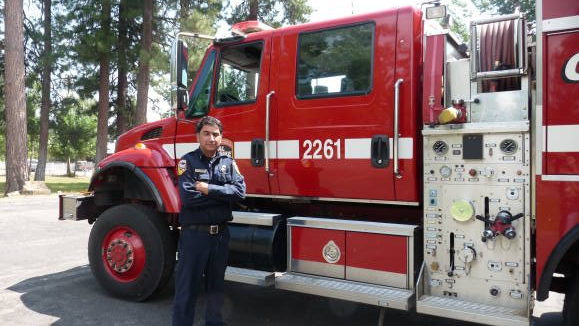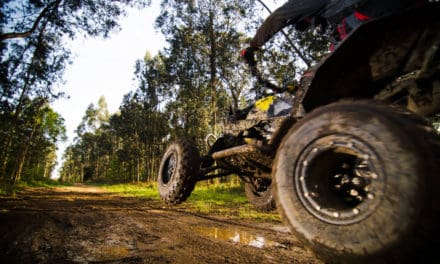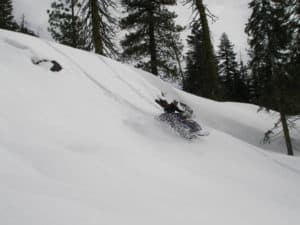By Melissa Wynn
Over the last several years devastating wild land fires have plagued Northern California; scorching miles of forest throughout the Sierra Cascade. The staff here at Mountain Valley Living, and our neighbors, are eternally grateful to the brave men and woman of Cal Fire that risk their lives to protect our homes and suppress the raging infernos that threaten our woodland communities. It is said that no valuable knowledge comes without sacrifice and few sacrifice as much for their career as a dedicated fire fighter. Like most careers, step one for the Cal Fire folks is education. According to their website “Currently there are 3 certifications in the Fire Fighter Series; Volunteer Fire Fighter, Fire Fighter I, and Fire Fighter II. While the Volunteer Fire Fighter focuses on skills and tasks necessary to assure safety on the fire ground, Fire Fighter I & II prepares the fire fighter to perform essential and advanced fire ground tasks as well as allowing entry into all tracks of the certification system.” These three certifications are merely the beginning for those that wish to advance their career to levels beyond the seasonal fire fighter status. Continuing courses in fire prevention, command, and investigation are just a few available to the aspiring fighters of flames. Those who prefer the excitement of the hands on approach often follow a path of specialized rescue techniques and continue their studies with rescue courses for confined spaces, trenches, rivers, and flood waters just to name a few. Others become fascinated by the flames themselves and go on to study fire behavior and ecology. Fire fighting definitely requires both brains and brawn. Personal motivation seems to be the only speed limit to a rewarding Cal Fire career. Applications, current available classes and job descriptions are available online at www.osfm.fire.ca.gov. Physical fitness and training are also essential for the safety and success of a wild land fire fighter. The mountains of Northern California present special challenges with extremely rugged, rocky, densely forested and inaccessible terrain. Fire fighters entering a wildfire zone, begin their journey weighted down with at least thirty pounds of gear and protective clothing. Each must carry the tools necessary to their trade, a five pound emergency fire shelter and at least two liters of drinking water. Soaring summer temperatures and blistering heat from the fires, often acres in size, make constant hydration a survival necessity. Packing forty eight pound fire hose packs up steep embankments and through narrow trenches amid chokingly thick smoke are definitely not duties to be performed by the weak or faint of heart. These everyday heroes must always be at the top of their physical game. The work itself helps to keep all fire fighters in shape but constant rigorous training is required to be the best. Wild land fires are a part of nature and necessary to the overall health of a forest ecosystem. However, when lives and communities become threatened fire suppression must happen swiftly. Several fire lookouts dot the Sierra; each manned by a single Cal Fire employee on peak fire danger days. Dry, hot weather and the dreaded summertime thunder storms are just a few conditions that keep Cal Fire on full alert. Early detection means the difference between a fire out in hours and a devastating inferno like the Chips Fire of 2012 that charred several square miles of our stunning Plumas National Forest. Look out duty is a lonely shift spent endlessly scanning the horizon for any signs of smoke or flame. Thank you to those that endure the solitude for our safety. Once a fire is detected and determined a danger the fire fighters spring into action to contain and suppress it. There are no fire hydrants in the woods so wild land fire suppression takes many forms. Hard working hand crews risk life and limb cutting miles of defensible fire line around a blaze with picks, shovels, determination, and old school elbow grease. Hose and water are put to flame in areas that can be accessed by water hauling vehicles. Sometimes it takes support from the air to get a fire out. Brave pilots of helicopter and air tanker fly nearly blind through clouds of smoke to drop buckets of water and bellies of fire retardant, giving the ground crews some much needed help from above. Occasional fire fighters must start a new fire outside the boundaries of the original blaze in a technique called back firing to contain it with in the newly lit boundary. They literally fight fire with fire. There is much more to fire suppression than simply spraying some water on a fire. The dangers and unforeseen mishaps are incalculable. Not only do Cal Fire fighters work unbelievable hard in the field, they sacrifice limitless time away from home and family whenever duty calls. A typical fire fighter shift lasts for seventy-two hours. However, when a big blaze requires a lot of manpower these tireless heroes might remain in the field for up to thirty days. That is dedication! I recently paid a visit to thirty-year veteran Captain John Valentich at the headquarters of the Cal Fire Lassen-Modoc unit in Westwood to learn a bit more about what the fire fighters do when they are not in the field or behind the desk. It turns out that they work just as hard at headquarters as they do in the field. This unit does not employ any outside help for the upkeep or maintenance of their large complex. Each fire fighter does their share to keep the barracks clean and up too snuff. They mow their own lawn, prepare their own meals and do their own laundry. Specially trained employees even do all the maintenance and repairs on the fire engines, bulldozers and other fire fighting equipment. On the day of my visit several fire fighters were having a training exercise on the lawn in full gear on a day over ninety degrees. Several more were working out in the exercise room while one was building some new equipment in the shop next door. The entire grounds were spotless and pristine and everyone had a nose to the grindstone. These guys don’t sit around waiting on an alarm to send them out on a fire. Preparation and preparedness are the name of the game at headquarters. Should the alarm sound, this dedicated crew is ready to be on the road to the fire in seconds. I have never been more proud to see our tax dollars so hard at work. Chief Sean Delacour runs a tight ship and it shows. This friendly and busy fire Chief oversees both the Eagle Lake Station and the Westwood Battalion Headquarters along with Peg Leg Lookout. Kudos to the Chief and the Lassen-Modoc Unit! It was fascinating learning what the fire fighters of Cal Fire do in a day. Their hard work and dedication inspired me to ask Captain Valentich what we, as regular citizens, can do to help or lighten their work load. His answer was swift and precise. “ Keep the brush and debris around your homes and properties trimmed and clean.” Creating a defensible space around our own areas is the best thing we can do to help our fire fighters. The less fuel a fire has to consume, the smaller the fire and the faster it can be suppressed. Just like the road crews need us to “give them a brake” the fire fighters need us to “give them some space.” One thing we should never do in our attempt to help is to enter a fire area or make an attempt to fight the fire on our own. As we just learned this is a job for those with specialized training and the proper equipment. It is best that we all stay out of the way, don’t stop to try to get information or be a looky loo. Just stay back and let the professionals do the jobs that they train so hard to do. To learn more online about fire fighters and what they do visit the fire fighter blog at www.wildland.com or like Cal Fire on Facebook to receive updates on wild land fires in your area. Endless information on education, employment and the daily workings of Cal Fire can be found at www.osfm.fire.ca.gov. Special Thanks to Captain John Valentich, and the crew of the Lassen-Modoc Unit, for taking the time to share with us a true day in the life of a fire fighter.
















